Australia’s legendary Ghan has been called one of the world’s great train journeys. Its 3-day, 2-night journey travels from Adelaide to Darwin (and vice versa), traversing the Outback’s magnificent Red Centre. The north-south coast-to-coast journey covers 2979 km (1851 miles).
Construction of the Ghan rail line began in 1878 – and the train’s inaugural journey from Adelaide to Alice Springs took place in 1929. Thanks to early pioneers along with hard-working camels & their handlers (cameleers), the train played a critical role in opening up wide parts of Australia’s remote interior.
Today’s travelers on “The Ghan” journey in style and comfort, following in the tracks of Australia’s pioneers & early settlers. In addition, there are a variety of route choices. You can travel the full cross-country route from Adelaide to Darwin in either direction. Or you can start or end mid-way in Alice Springs, an important gateway town in the Outback.
About This Blog Post – My Ghan Experience
I had the pleasure of riding The Ghan during my visit to Australia in May 2016. My American travel group had booked the 2-day/1-night trip on the northbound Adelaide to Alice Springs route. This 26-hour journey covered 1556 km (967 miles).
In Alice Springs, we disembarked the train to take a 2-day excursion to Ayers Rock / Uluru, one of the world’s great natural wonders! In fact, I wrote a blog post all about that wonderful experience entitled: Australia’s Fascinating Outback & Red Centre / Visiting Ayers Rock.
In this post, I’ll be sharing my delightful journey on The Ghan to give you a good idea of this unique train experience. I will also provide helpful tips and information for including a Ghan journey when you visit Australia.
History of The Ghan, Camels & Cameleers
Originally dubbed the “Afghan Express“, The Ghan was named for the pioneering cameleers (many from Afghanistan) who helped blaze a permanent trail into Australia’s Red Centre more than 150 years ago. The Ghan’s logo pays tribute to these camels and their handlers.
Camels were ideally suited for the harsh landscape of the country’s central arid & desert interior. As well as being able to go without water for long periods, camels have broad, leathery foot pads to protect them from the hot ground. And, most impressively, they can carry up to a half ton of weight!
In the 1860s, camels and the cameleers from the Middle East arrived in the thousands as Central Australia was opened up by explorers and European settlers. Camels transported goods, water, mail, and equipment to remote towns, and they were instrumental in the construction of the rail lines and the Overland Telegraph.
Over 90 years ago (in 1929), The Ghan first departed Adelaide with more than 100 passengers for a 2-day journey to the remote Outback town of Stuart, later renamed Alice Springs.
With this rail line complete, camels were no longer needed. As a result, cameleers let their beloved camels free and it turns out, they thrived in the Outback. In fact, Australia currently has the largest wild population of camels in the world, numbering over 1 million! Who knew?
However, it was always intended for The Ghan to travel all the way to the city of Darwin on the north coast. Finally, the Alice Springs to Darwin rail link was complete, with the inaugural transcontinental journey taking place in 2004. The realization of the country’s Ghan dream was complete!
Starting our Ghan Journey in Adelaide
Our journey from Adelaide to Alice Springs began on a May Sunday morning in the Adelaide Parkland Terminal for rail passengers. There was a bustle of activity as our group checked in at the counter, with our bigger suitcases sent off to the “baggage car’ for the duration of the trip. We kept our smaller, specially packed “overnight bags” with us.
We soon headed into the large lounge area to wait with other passengers, excitedly anticipating the journey ahead. A musician was playing his guitar while waiters brought around glasses of champagne and orange juice, along with breakfast canapes like fruit tarts and muffins. There was also a gift shop to entertain us while we waited – and yes, I visited!
At 11:10am, it was time to board The Ghan in preparation for our 12-noon departure. Our group of 11 had booked rooms in the Gold Category. We were all in Carriage M. Even though I was traveling as a “single,” I had booked a Twin room, which has two beds – a top and bottom bunk.
During the day, the lower bed is a nice 3-person sofa with armrest alongside a writing table. The room has a small closet with a safe and a small bathroom with sink, toilet and shower. For enjoying a Twin room all to myself, I did need to pay a single supplement. To be honest, the room would have been pretty cramped with two people. However, rooms were still nice & quite functional.
The Gold Category Single rooms were in a separate car (carriage). Single rooms had only the lower bed (sofa by day!) and a sink in the room. The shared bathrooms (with toilet and shower) were at the end of the carriage.
Our carriage’s hostess Lauren was very sweet. Once we had all settled in a bit, she gave us a group orientation to the rooms and the train. She told us our group had lunch & dinner reservations for 2:45pm and 8:00pm in the Queen Adelaide restaurant. Lauren also told us the beds are made up during our dinner and breakfast time.
And We’re Off
My group all headed to the Lounge car to enjoy final views of the pretty town of Adelaide as we departed the station at 12:15pm. Waiters brought around more champagne – including a cappuccino for me. All meals and drinks are included in the Gold Class.
We happily relaxed in the comfy lounge, as we chatted with fellow passengers and watched scenery pass by from the train’s large picture windows. First, we passed through farmland with sights of sheep grazing. We had each gotten a large glossy foldout map of “The Ghan Journey” to orient ourselves along the way.
Around 3pm, staff came to the lounge to let us know it was time for our lunch. So, we headed to the Queen Adelaide dining car to enjoy a gourmet meal. I ordered the beef tenderloin and mango ice cream. Others got a ploughman’s plate and passion fruit tart.
After lunch, we all returned to our rooms to rest – including taking a nap like me! Around 4:45pm, we passed through the city of Port Augusta, a former seaport at the top of the Spencer Gulf. Soon, the desert landscape of the Outback with its red soil and scrubbier brush would begin, along with views of the Flinders Mountain range to the right. It was 5:45pm when I watched the pretty sunset from my room’s window.
Dinner & Bedtime
Once again, our group collected back in the lounge for pre-dinner drinks. At 8:15pm, we were ushered into the Queen Adelaide restaurant for dinner. The dining car is comprised of tables of four. My main course was pressed chicken and gnocchi, preceded by an appetizer of salmon mousse on flatbread and a sushi roll. Desert was bavarois with a chocolate covering and vanilla ice cream. Yum…
We retired to our carriage around 9:45pm, giggling as we were greeted by our rooms’ delightful transformation into bedrooms! Having a Twin with both an upper & lower bed, I had told Lauren that I preferred the upper bunk. So, a tall secure ladder was in place that allowed me to easily climb up into the top bed. There were also side railings that folded upright once in bed to keep you from falling out at night! I also went next door to check out my friend Carol’s Twin room, who had chosen the lower bed (photo, lower right).
- Photo Credit: The Ghan
I enjoyed a final view of the star-filled night sky from my darkened room before going to sleep around 11pm. The bed was actually quite comfortable. However, we were on a train after all, so there was the expected shaking and clanking as we traveled the rails. I slept well, with some help from my ear plugs and sleeping pill.
More About Our Ghan Train
I enjoyed talking with Ghan staff to learn more about this fascinating train. They told me that on this particular journey, The Ghan was comprised of 37 cars (carriages) & 2 locomotives. This included 16 Gold Category carriages (with sleepers) and 2 Platinum cars holding 20 passengers in larger, more deluxe rooms.
There were also 4 Gold dining cars, 3 Gold lounges, and 1 Platinum dining & lounge combo. Four carriages were for the staff (approximately 45 people) along with 3 “power vans” to provide electricity.
Apparently, the size of the train depends on the season. In the 9-week high season, one source stated, the train consists of 44 carriages and 2 locomotives. This would make The Ghan Australia’s longest passenger train at 1.1 km (0.68 miles) in length!
Sunrise Stop in Marla
The northbound route offers an early morning stop in Marla to enjoy sunrise views over the Southern Australian desert landscape. So early on Monday morning, we passengers received a 6am wakeup call. Slowly, we exited the train in the dark. Staff had set up lighted lanterns along a path leading from the train to a central area with picnic tables and a fire pit.
The early morning air was brisk. Staff was serving steaming coffee and tea along with orange juice. They were also serving egg & ham sliders and a Vegemite mix roll. I learned that Vegemite is an Aussie favorite but clearly, this dark brown savory spread (made from yeast extract, vegetables and spices) is an acquired taste.
It was hard to see the actual sunrise (taking place around 7am) as the skies were very cloudy, but I did take some photos. What I particularly liked were cool views of the VERY long Ghan train, shimmering in the early morning light. I was one of the last to get back on the train around 7:30am.
The train departed Marla at 8:00am to continue our journey to Alice Springs. We had free time until brunch, which would be served from 10am until 1pm (no reservations necessary). So, like many, I returned to my room for another nap!
Brunch / Arrival in Alice Springs
Eventually, I met up in the lounge with some members of my group and at 11am, we headed for brunch. The meal included orange juice, breads, more Vegemite (ick!), and a delicious omelette with salmon on top. Dessert was a candied peach & yogurt parfait. We enjoyed more views of the Outback landscape from our windows!
There was an overhead announcement about a 30 to 45-minute delay in our scheduled 1:45pm arrival into Alice Springs. I returned to my room to shower and pack. I was most pleased to see that my small bathroom’s shower with its full-length wrap around curtain worked well and didn’t flood the bathroom floor as I had feared.
Around 2:15pm, we began our slow approach into the outskirts of Alice Springs, arriving at the station at 2:30pm. Our group’s delightful Ghan journey had sadly ended!
- Approaching Alice Springs – weather worn camel statues
- We also passed this old Ghan locomotive
We disembarked the train at 2:40pm. With overnight bags in hand, we walked along the many train cars to the Alice Springs terminal. There was lots of action, with different buses and guides meeting people for their day tours. Many Ghan passengers were continuing on to Darwin, so they had a few hours in Alice Springs to explore before the train departed at 6:00pm.
Our group was met by Darren, a local guide & driver with ATG Downunder. We picked up our checked bags to load onto the bus. Since we were headed to Ayers Rock/Uluru, a 6-hour drive (with dinner stop), there would be no time for sightseeing in Alice Springs. Departing at 3pm, we would already be driving the last section to Uluru in the dark.
The Outback Town of Alice Springs
I would have loved time to explore Alice Springs, if the schedule had permitted. This important gateway town to the Outback’s Red Center has an estimated population of 32,000 (in 2022). There is a real sense of history and pioneering spirit here. Some of the key sights include:
Royal Flying Doctors Service – RFDS has been providing vital medical care for over 90 years to thousands of Australians living in rural & remote areas. The current base is at the Alice Springs airport with a paid staff of doctors, nurses and pilots. Every cattle station (aka ranch) in the Outback must have a working landing strip. Depending on medical severity, patients are taken to hospitals in Alice Springs, Adelaide, or Darwin. The former base now houses the RFDS Museum.
Alice Springs Telegraph Station – Established in 1872 to relay messages between Darwin and Adelaide, it’s the best preserved of the 12 stations along the Overland Telegraph Line. In the Stations’ historical precinct, visitors can learn about day-to-day life of the first European settlement in Alice Springs. And how the station played a pivotal role in bridging the isolation and communication gap between remote Australian towns.
Ghan train passengers can choose other tour options, including local hikes or a visit to the Reptile Center where you can meet Terry the Saltwater Crocodile and other scaly friends. Here’s a link to the Alice Springs tour list.
More About Ghan Journeys
The Ghan was privatized in 1997. Until recently, it had been operated by Journey Beyond Rail Expeditions. The Australian company has now been acquired by the U.S. based Hornblower Group with extensive tourism experience. It’s anticipated that there will be additional efforts to attract more American travelers to Australia.
The Ghan Website – click here.
There are three main choices of Ghan journeys:
- The Ghan (full) – Adelaide to Darwin (or vice versa), which is 3 days/2 nights (54 hours)
- The Ghan (partial) – you can start or end mid-way in Alice Springs (in either direction) for 2 days/1 night
- The Ghan Expedition – an extended journey of 4 days/3 nights (76 hours)
Note: The Ghan does not operate December to February.
Katherine Stop for Nitmiluk Gorge Cruise
Katherine is a planned stop on all journeys between Alice Springs & Darwin – for both the regular Ghan & the Ghan Expedition. You will cruise down the Katherine River as large rock formations of the Nitmiluk Gorge tower over the calm water. You can visit both the First Gorge & Second Gorge with a 500-meter walk between them. Click here for Excursion Info.
- Photo Credit: The Ghan
- Photo Credit: The Ghan
More About The Ghan Expedition
The Ghan Expedition operates from Darwin to Adelaide (southbound only) between April and October. This 4-day/3-night itinerary differs from the normal Ghan trip with extended time to explore Alice Springs & the truly unique underground mining town of Coober Pedy – the Opal capital of the world.
In Alice Springs – for an extra fee – you can book a fixed wing scenic flight to/from Uluru (Ayers Rock) with a local tour of Uluru and return for a special under-the-stars dinner back in Alice Springs. Click here for the Expedition’s Off-Train Experiences.
COMMENTS: Have you ridden The Ghan? How was your experience? If not, do you have a desire to visit Australia’s Outback & ride The Ghan now?
Want to learn more about The Outback & Uluru/Ayers Rock? Check out my blog post – Australia’s Fascinating Outback & Red Centre / Visiting Ayers Rock.

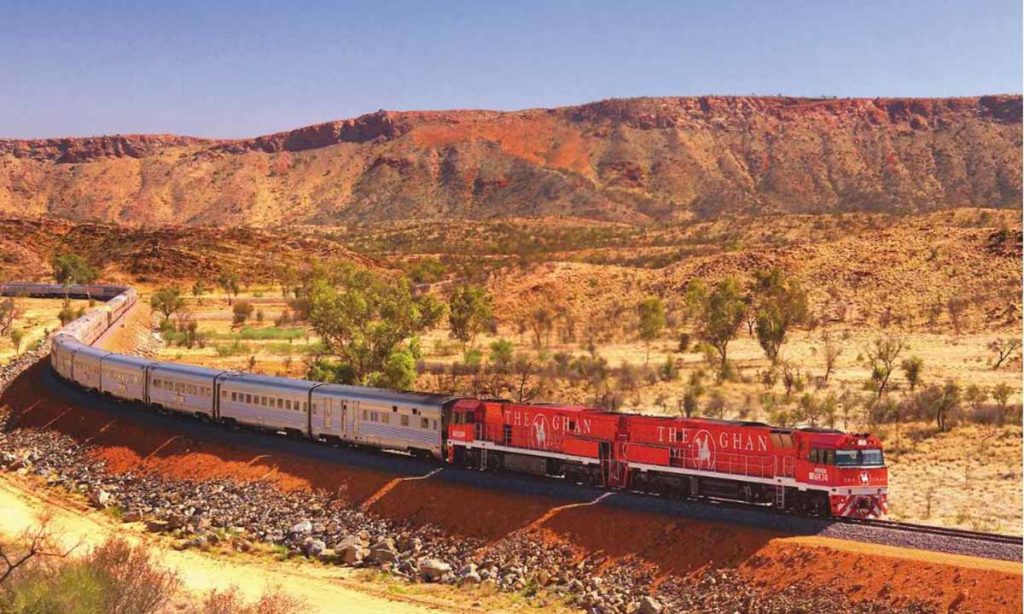
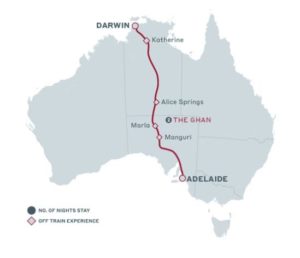
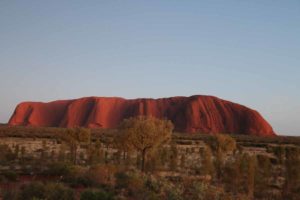

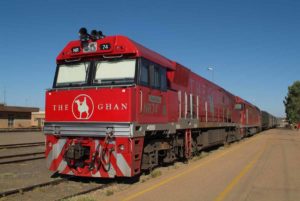









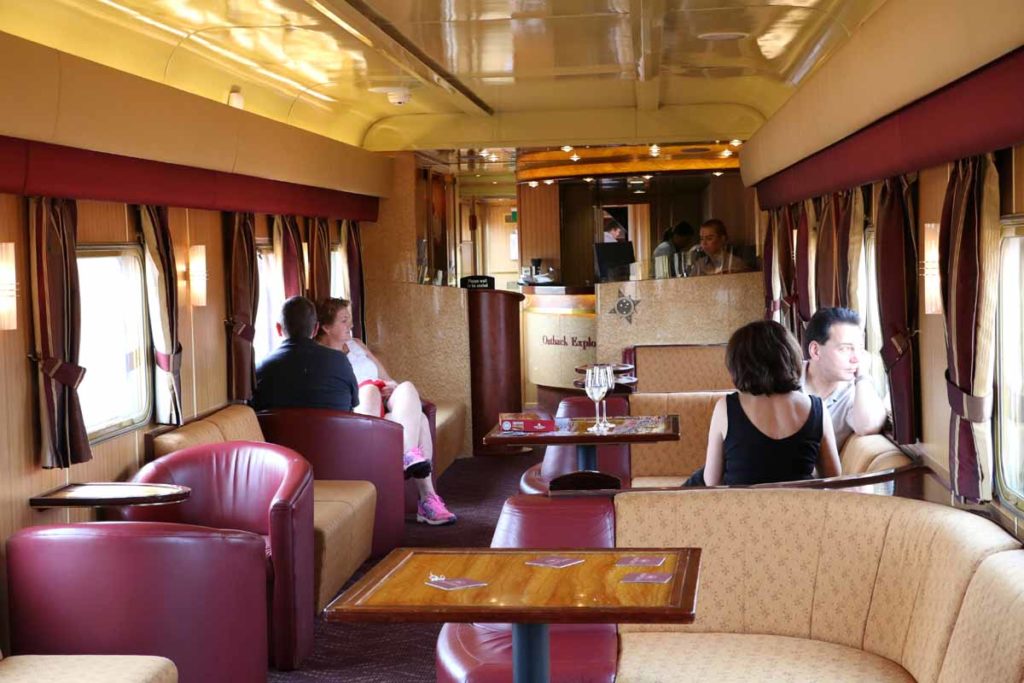


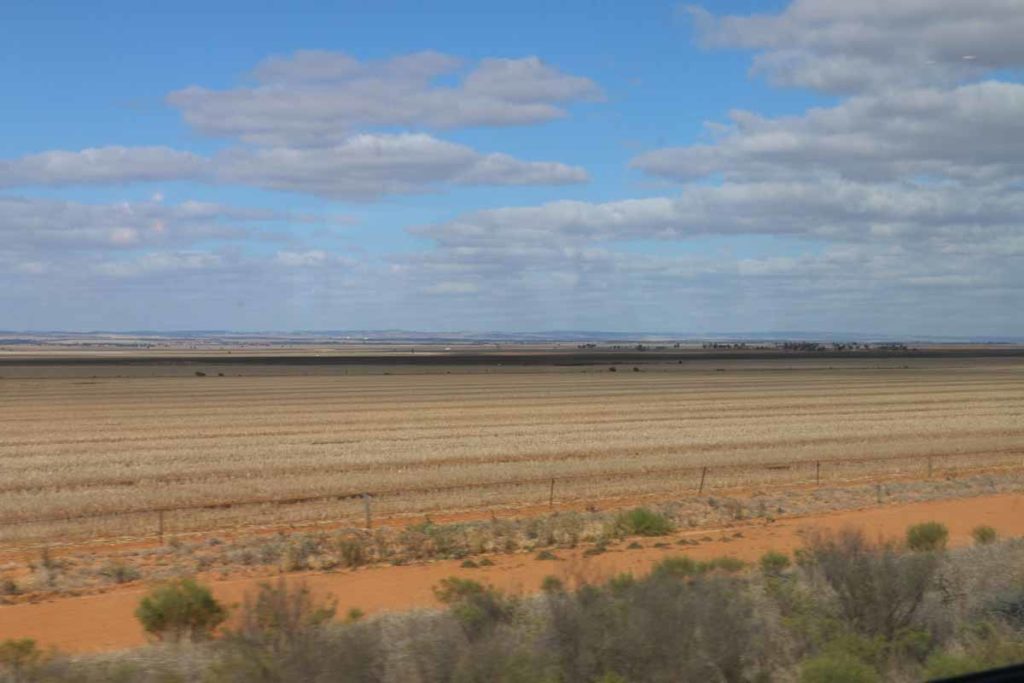


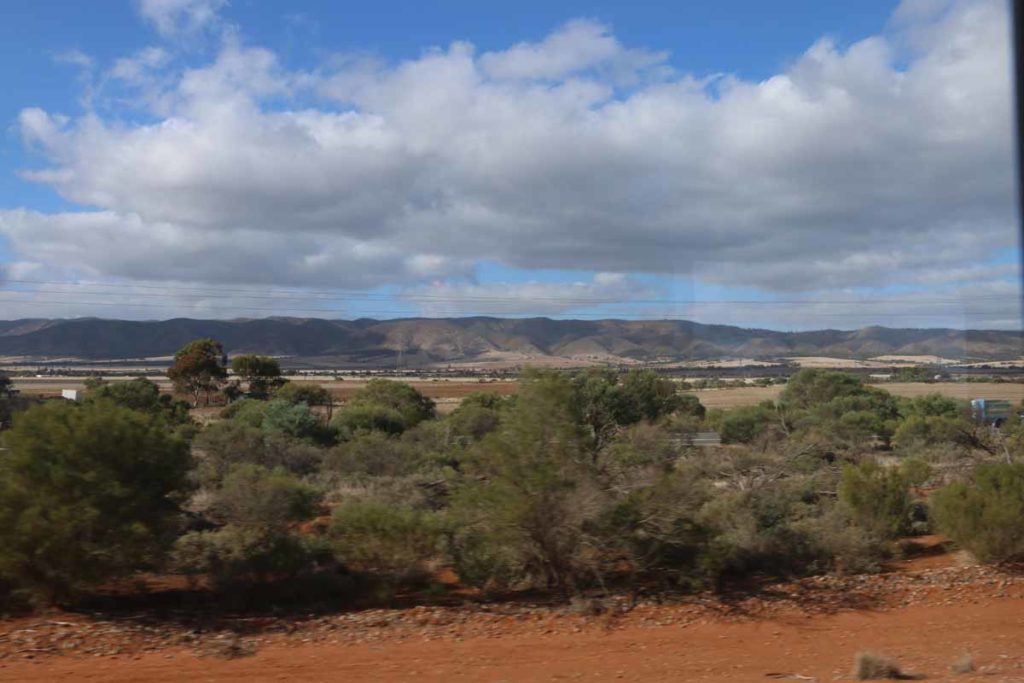
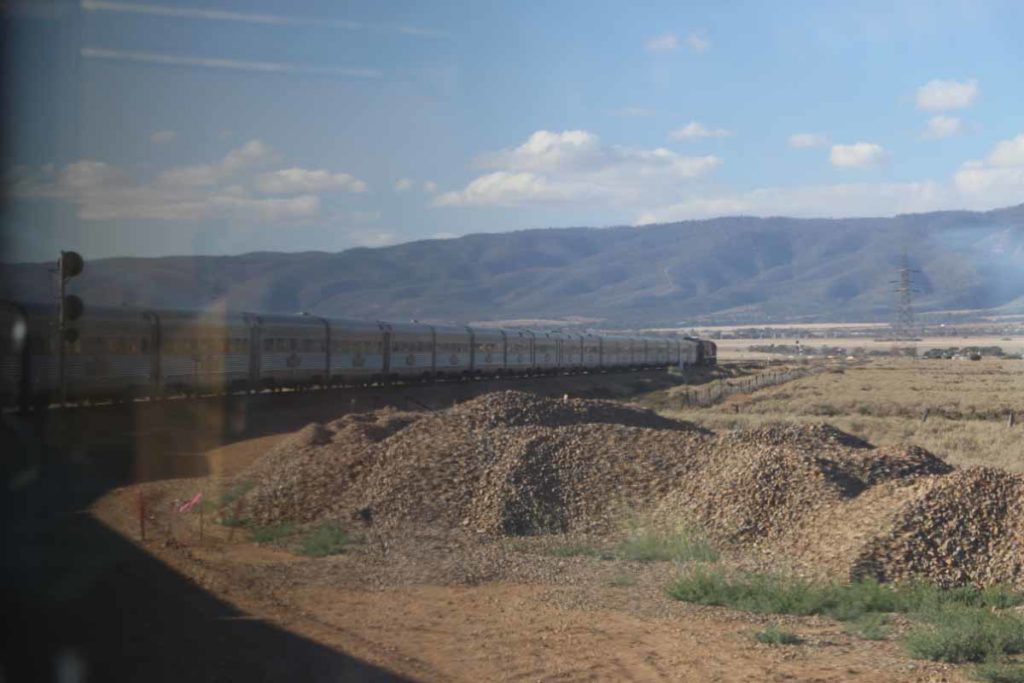
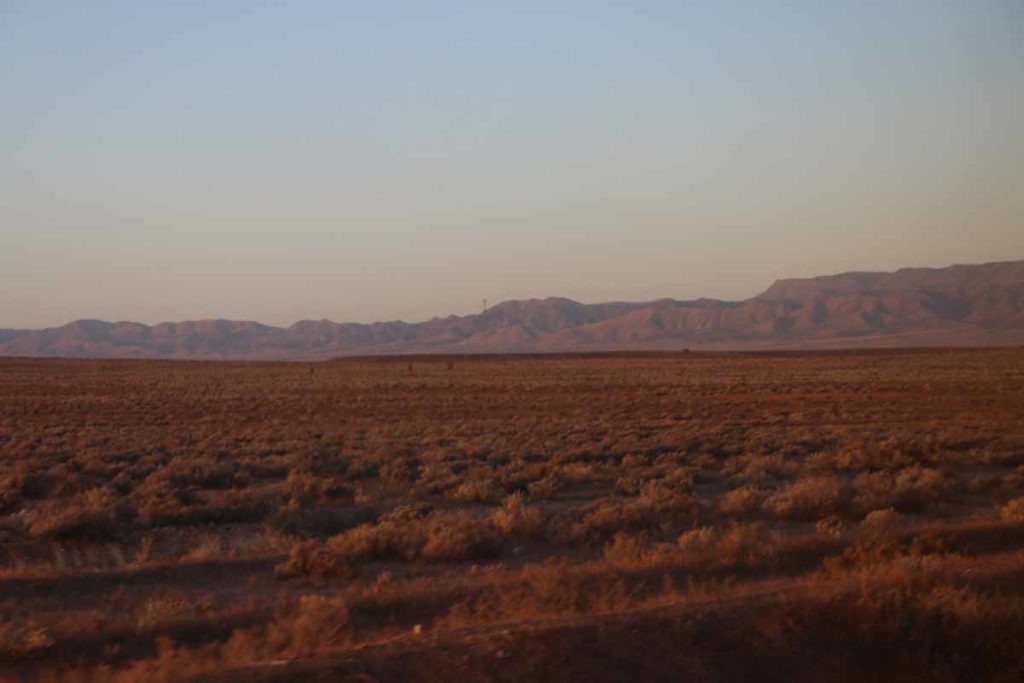
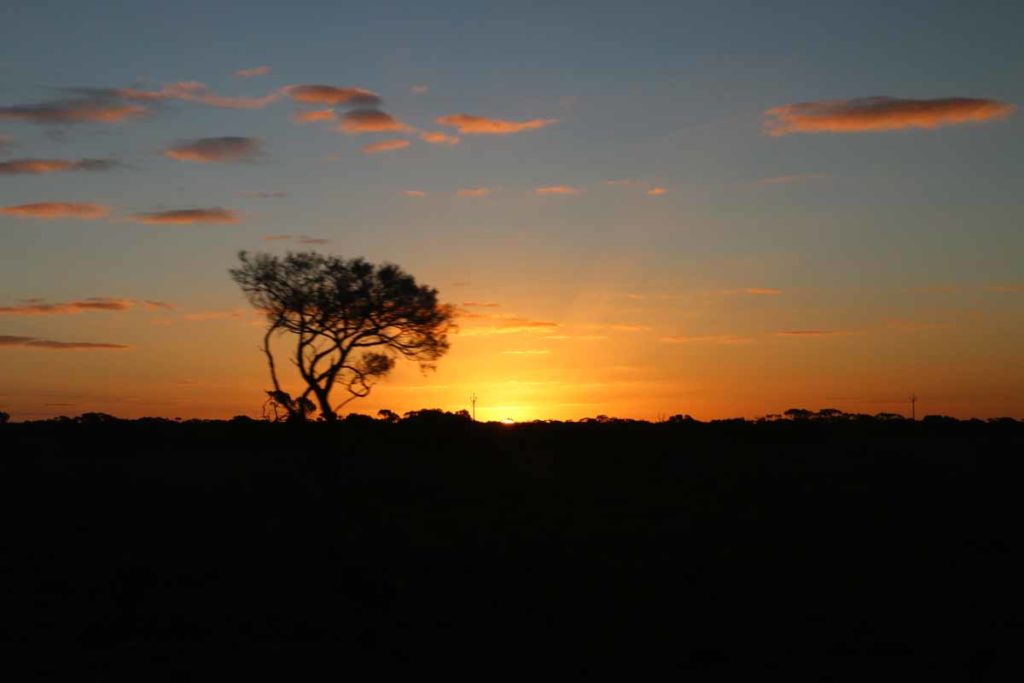




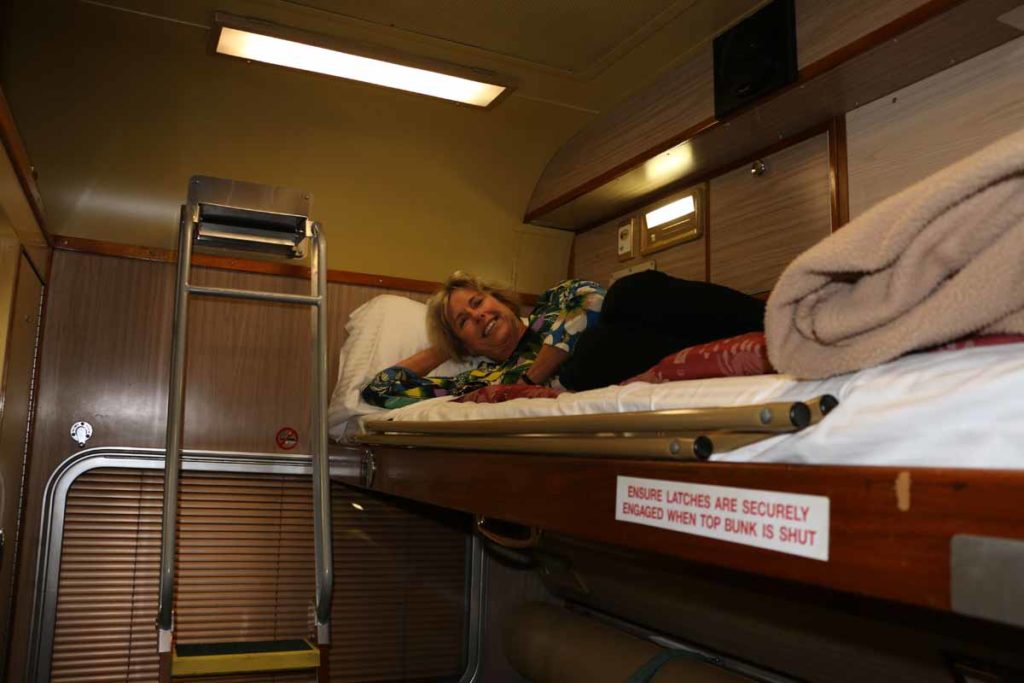




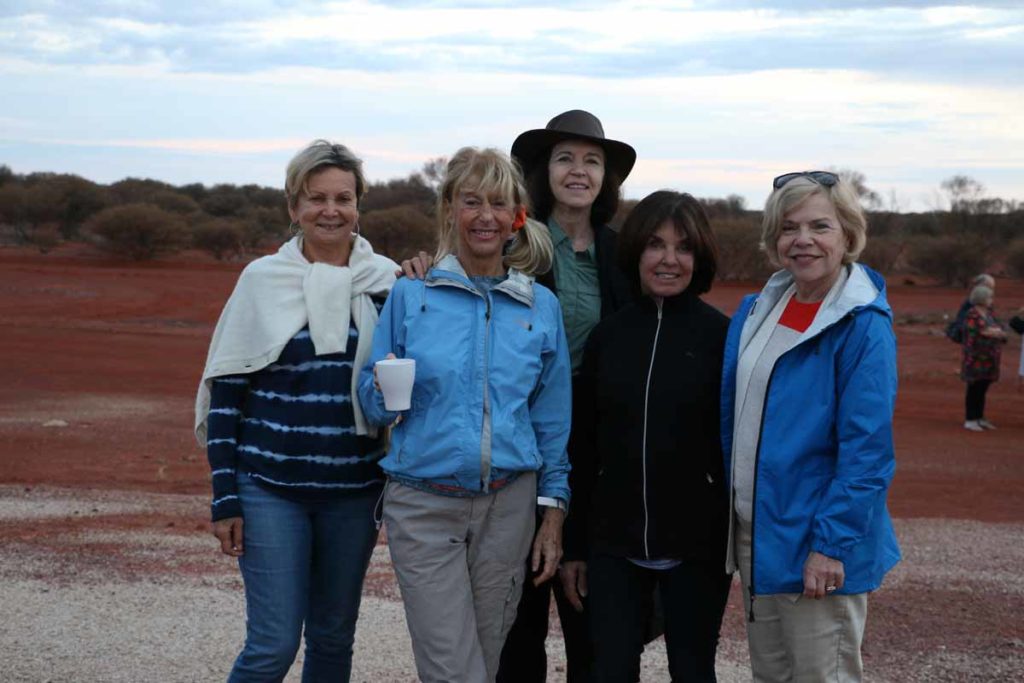

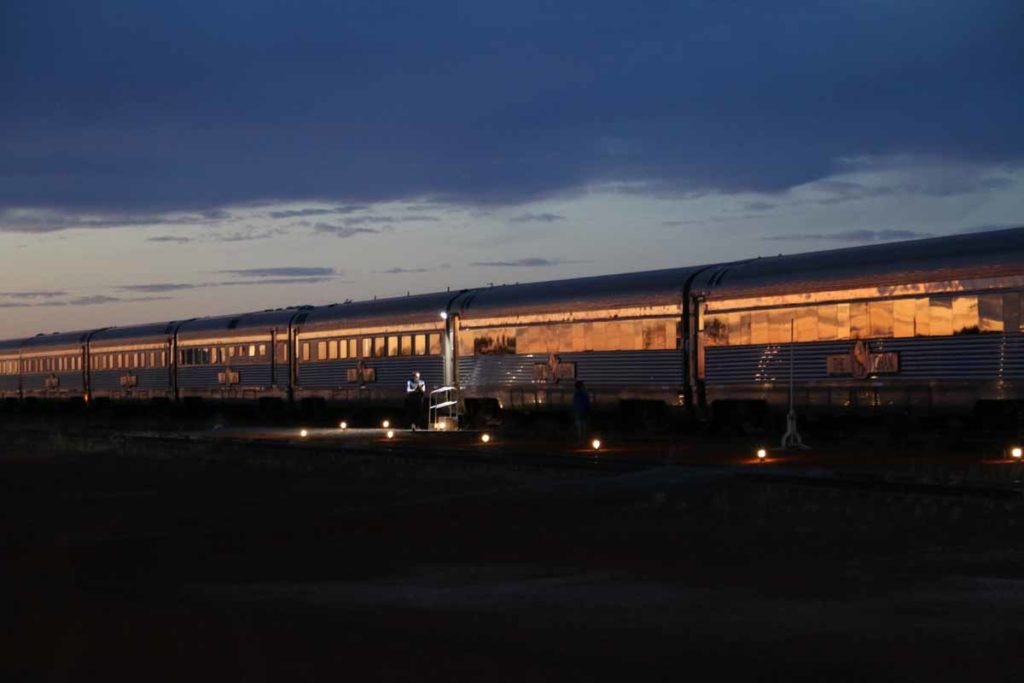

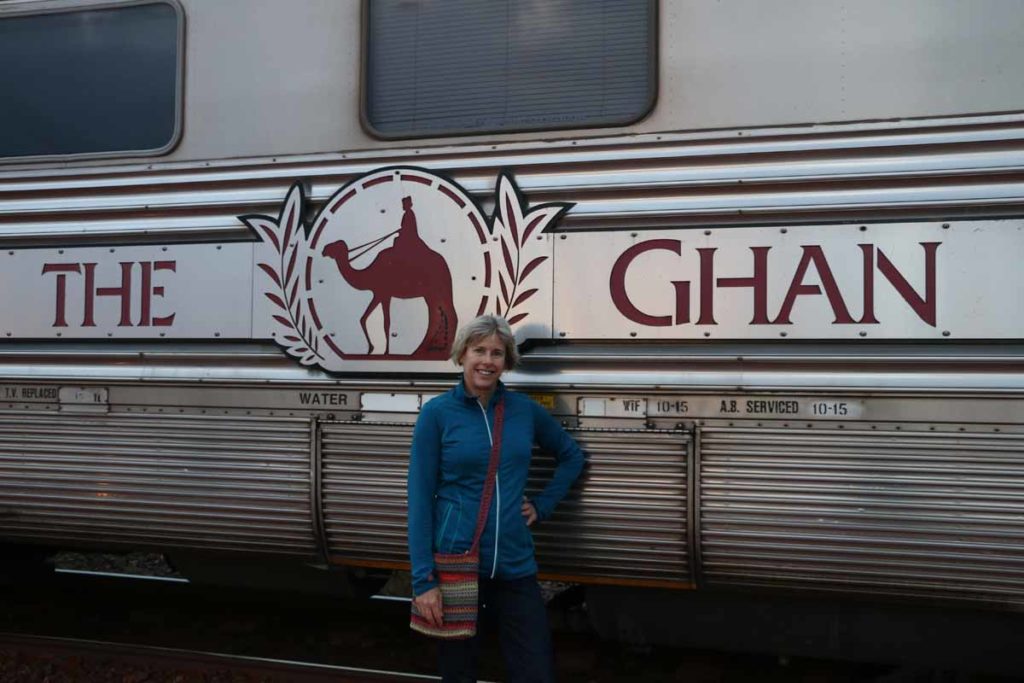
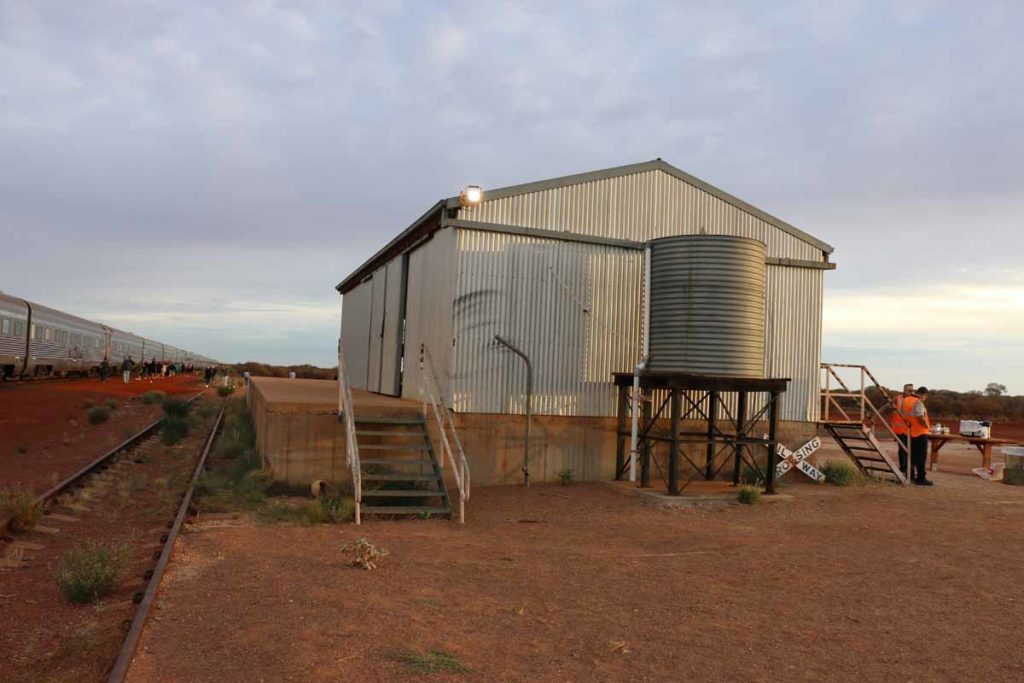




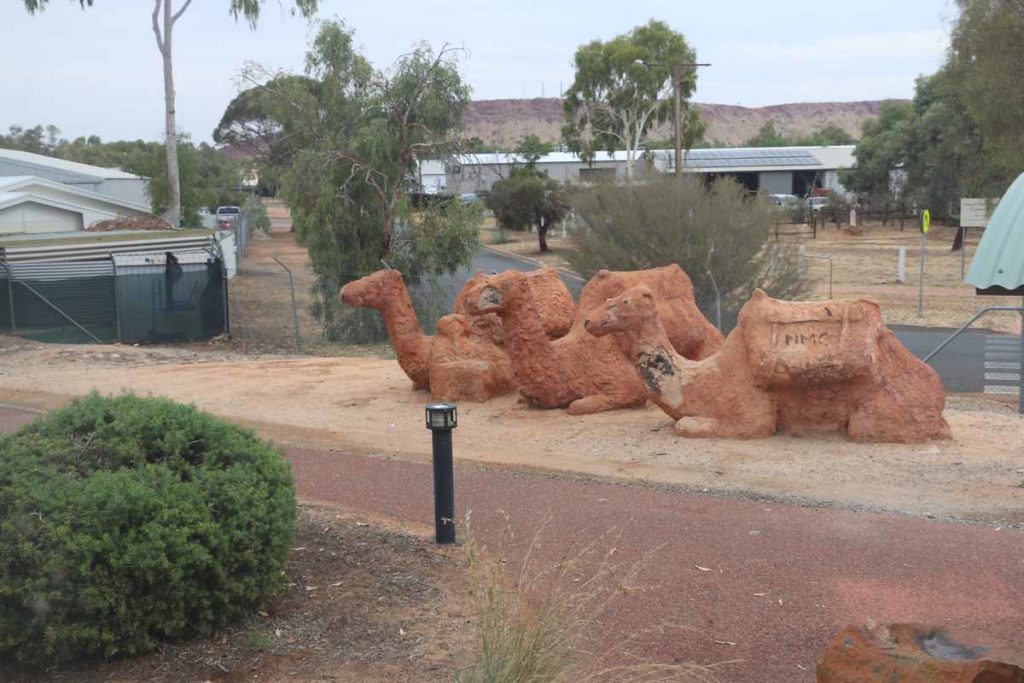
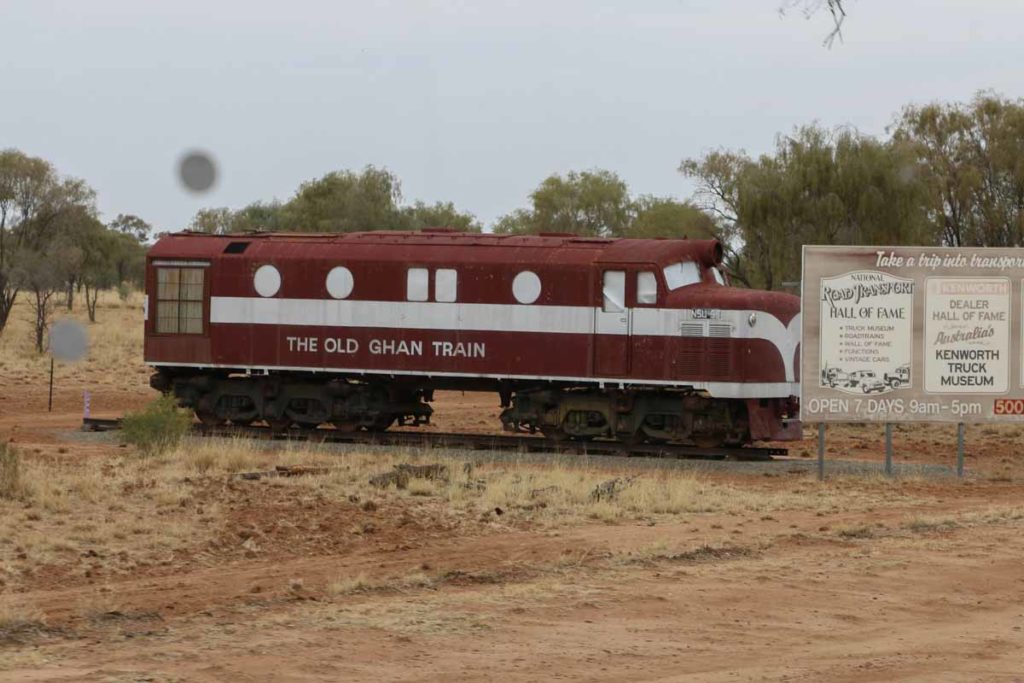







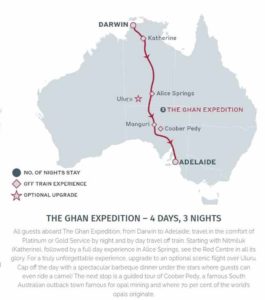
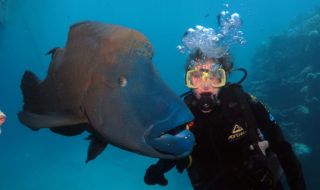

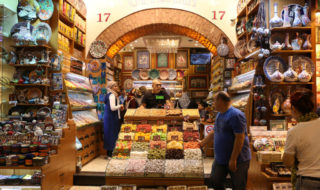

I’d love to try this train. Great description. I did go to Alice springs and uluru and found it all very interesting. Rode a camel. I was impressed by the flying doctors and the school of the air. That’s not the name of it but the organization bring education to kids in these remote areas. Very creative ways to manage this way of life.
Thanks, Mary Kay. So glad you’ve been able to visit Australia’s Outback – spending time in Alice Springs (I’m jealous!) and Uluru. Yes, I agree it’s fascinating to see how creative people can be at managing their lives in challenging environments. And, the power of air travel (via small planes) to bring needed services to people- whether the Outback, remote aspects of Africa or the Amazon.